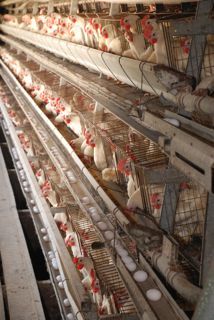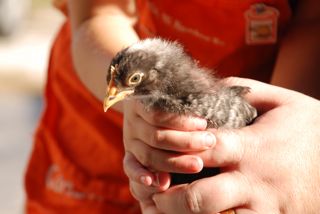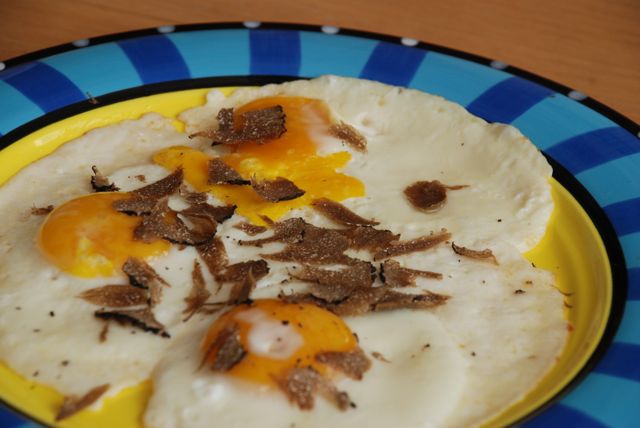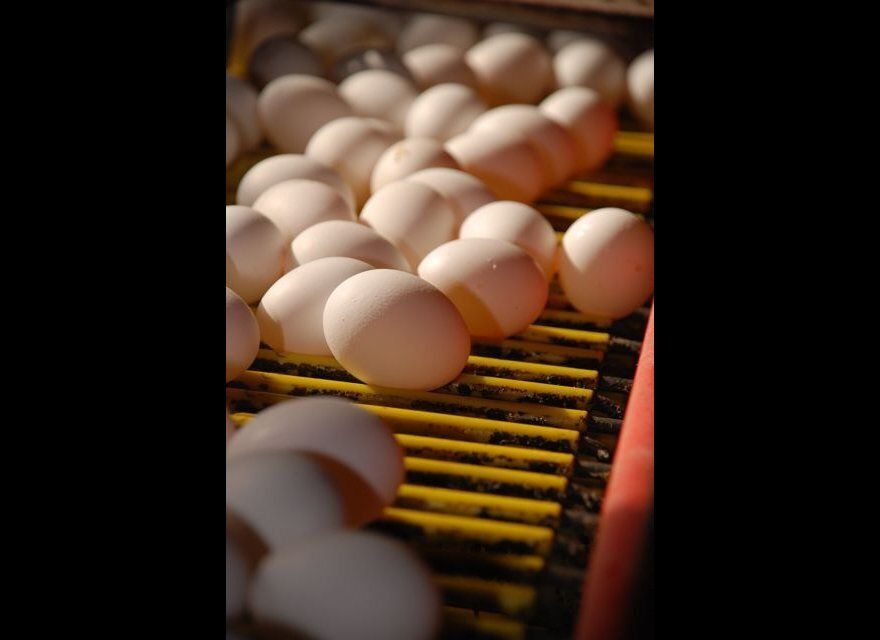I've always been curious about the differences in flavor between factory farm, cage-free, pasteurized and free-range eggs.
An egg is a perfect conveyor of flavor. According to the United Egg Producers association (UEP), it is more what chickens are fed, rather than how they live, that gives eggs flavor. An egg tastes exactly like what the chicken ate. Commodity eggs, like Egglands Best, pride themselves on what they feed their chickens. Depending on the producer, it can be vegetarian, Kosher, enriched with Omega-3, etc. I discovered that the Omega-3 eggs had a slight fishy taste. I also noticed a subtle difference in flavor between the cage-free and "regular" eggs, but I was told that it was due to the feed. In Italy, where we have our cooking school, chickens are fed Beta-carotene. There the eggs are the color of sunset and taste fresh and rich. 
At the invitation of the UEP, I spent a day as an embedded journalist touring egg farms. We boarded a bus in Tampa and drove two hours past picturesque towns and horse farms, until turning off the road to be faced by closed gates. After our bus was thoroughly hosed down, we were allowed to enter and parked next to a series of ten warehouse type, corrugated metal buildings. Each of these, we were told, was home to 100,000 chickens.
Before entering the houses we had to don bio suits. We even had to decontaminate the soles of our shoes. Inside the mostly mechanized facility we saw the birds. Specially bred for docility and high volume production, these chickens live, six to a cage, in 67 square inches of individual space. We would later learn that much study went into figuring out the optimal space for a chicken and what type of living situation helped to increase egg production.
Next, we moved on to visit a cage free facility. It's a bit of a misnomer. The outside of the buildings looked like low-slung versions of the caged bird facility. We entered a dimly lit holding area that was fenced from the larger bird living space. Twenty thousand birds huddled together on the floor. They could move around; however they kept close to each other. I learned these chickens required more food and were more costly to keep than their caged cousins, increasing the cost for cage-free eggs.
I also tried Safest Choice brand pasteurized eggs; represented as an egg with no possibility of salmonella contamination. I found them very similar in taste to conventional eggs, although they were a bit more difficult to separate and whip.
In order to make a complete comparison, I also visited friends who raise chickens in their backyard. Their 12 chickens are let out in a 10-acre yard. The chickens lay eggs of many colors. The color difference is due to the breed and the family chose different chicken breeds to get an Easter egg effect. As we pulled up to the home, the chickens dispersed and had to be corralled by the children. Are these chickens happier? Well... the family recently bought another clutch because a now happy coyote had found a way into the hen house. The family was kind enough to give us a dozen of their fresh eggs, which we happily fried. The eggs of different colors tasted the same, but; these eggs were rich and silky, and they all had more flavor than any American egg I had previously tried. 
So.... are factory farmed eggs inferior? The factory produces bland eggs extraordinarily well. Lots of money and research has been spent on finding the optimal breed and they are housed to create maximum production. However, the eggs that came from the home farm had much greater flavor.
I'm curious as to why there aren't gourmet eggs. If eggs are such a great conveyor of flavor, why not change the chicken's feed and create flavored eggs? Our factory farm guide said, "consumers don't like their eggs messed with". Obviously, factory egg farms have found their niche and don't plan to change. However, some small US farmers feed their chickens marigolds to produce an egg similar to the ones we found in Italy. And there are always entrepreneurs; perhaps, we will see "chocolate flavored eggs" cropping up in farmers' markets.
In our home, the ultimate way of eating an egg is fried and topped with shaved truffle. We offer this recipe with which to enjoy your favorite eggs. 
Eggs with Shaved Black Truffle
Uova al Tartufo Nero
Copyright by Lael and Giuliano Hazan
Serves 2
4 eggs
1 tablespoon of unsalted butter
Salt
Freshly ground black pepper
1 ounce black truffle
1.Put the butter in a 10-inch non-stick skillet and place over medium heat. When the butter foam begins to subside, crack eggs and open them into the skillet. Season with salt and pepper. Cook until the white of the egg is firm and no longer translucent, 3 to 5 minutes.
2.When the eggs are done, slide them onto a serving platter. Thinly shave the black truffle over them to cover the egg evenly. Serve hot, inhaling the rich aroma and enjoy.
To read more of Lael and Giuliano Hazan's work, visit educatedpalate
